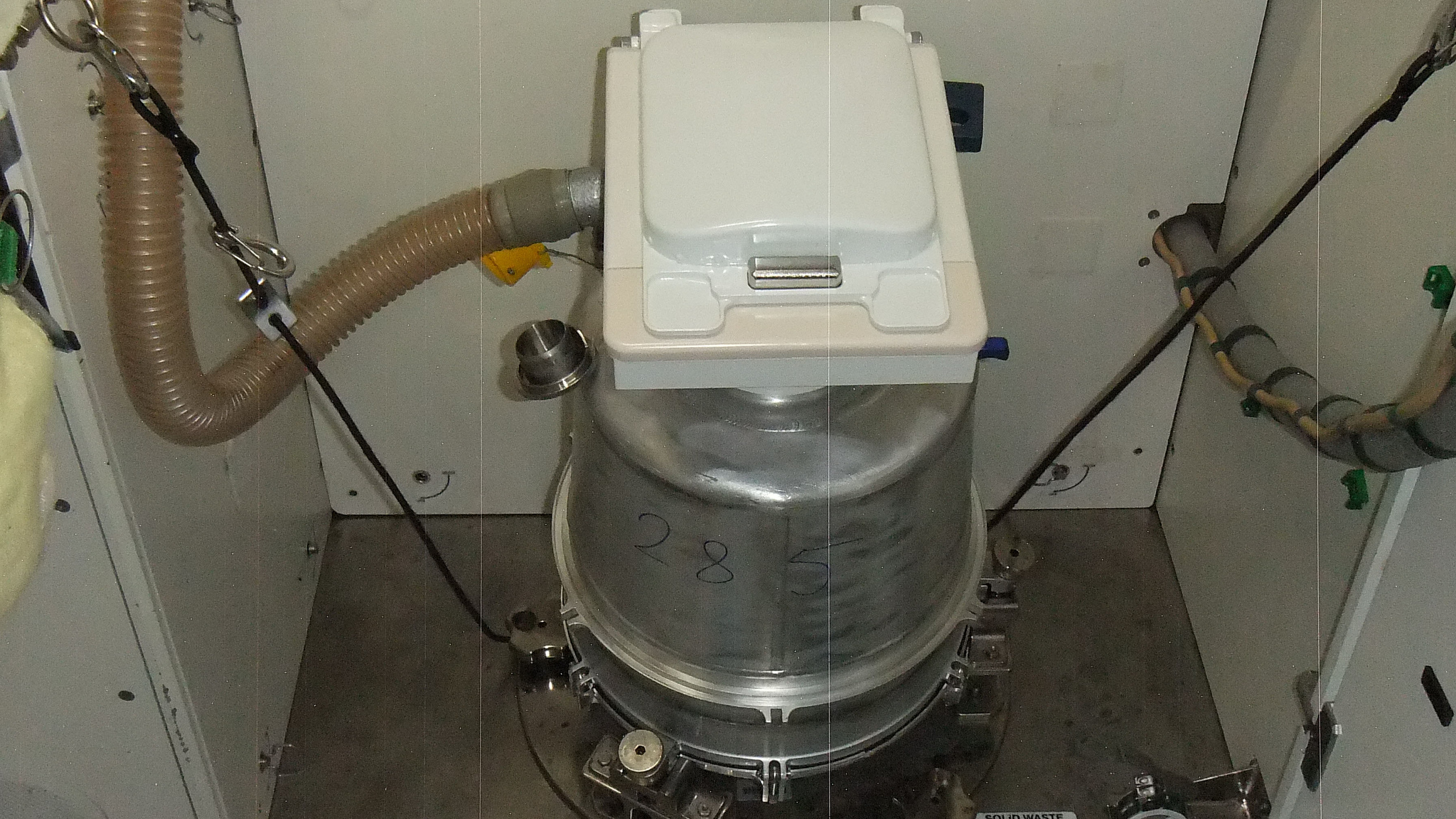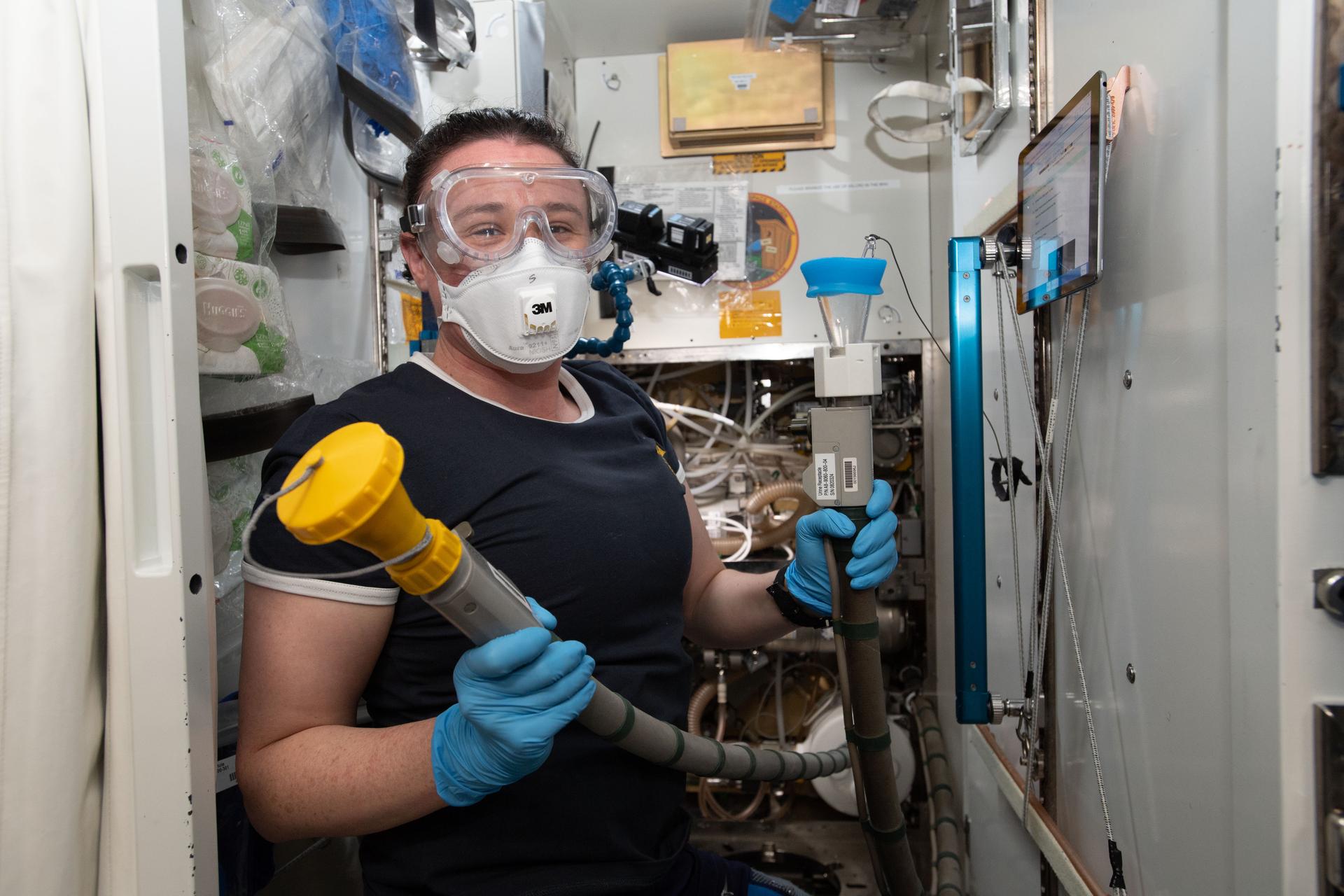Scientists Are Fighting Drug-Resistant Bacteria in Space with Silvery Shield

While living in space weakens astronauts' bodies, microbes can thrive in the zero-gravity environment, growing stronger and even developing resistance to antibiotics.
To help minimize the spread of germs on the International Space Station, researchers have developed a new type of antimicrobial coating made of silver and ruthenium and tested it on one of the yuckiest surfaces inside the space station — the toilet door.
Having coated the door to the space toilet with the new substance, known as "AgXX," the space station astronauts tested the surface for bacterial growth three times over the course of 19 months. After the first six months, the AgXX-coated surface remained bacteria-free. Six months later, nine strains of bacteria were found there, and three more strains were discovered by the end of the study.
Related: There's Drug-Resistant Bacteria in the Space Toilets, Guys
Although it didn't stay germ-free in the long term, the AgXX-coated surface had 80 percent fewer bacterial strains than the control for this study, an uncoated area of bare steel. For comparison, a coating of pure silver — a metal long known for its antimicrobial properties — reduced the number of bacteria by only 30 percent compared to the plain steel.
AgXX works by killing "all kinds of bacteria as well as certain fungi, yeasts and viruses," Elisabeth Grohmann, a microbiologist at Beuth University of Applied Sciences Berlin and lead author of the new study, said in a statement. "The effects are similar to bleach — except the coating is self-regenerating, so it never gets used up."
Over time, the coating's germ-killing capabilities were reduced, but not because the material itself became less effective. Rather, a buildup of dust and dirt likely rendered the surface less able to kill bacteria, Grohmann said. "With prolonged exposure time a few bacteria escaped the antimicrobial action. The antimicrobial test materials are static surfaces, where dead cells, dust particles and cell debris can accumulate over time and interfere with the direct contact between the antimicrobial surface and the bacteria."
Get the Space.com Newsletter
Breaking space news, the latest updates on rocket launches, skywatching events and more!
On all three materials — AgXX, silver and stainless steel — the researchers found multidrug-resistant bacteria, or strains of bacteria that are resistant to at least three different kinds of antibiotics. Among those bacteria, most were resistant to sulfamethoxazole, erythromycin and ampicillin.

"Most importantly, no serious human pathogens such as methicillin resistant Staphylococcus aureus (MRSA) or vancomycin-resistant Enterococci (VRE) were found on any surface. Thus, the infection risk for the crew is low," the researchers note in the paper, which was published today (March 19) in the journal Frontiers in Microbiology.
"Spaceflight can turn harmless bacteria into potential pathogens," Grohmann said. "Just as stress hormones leave astronauts vulnerable to infection, the bacteria they carry become hardier — developing thick protective coatings and resistance to antibiotics — and more vigorous, multiplying and metabolizing faster."
"Immunosuppression, bacterial virulence and therefore infection risk increase with duration of spaceflight," Grohmann said. "We must continue to develop new approaches to combat bacterial infections if we are to attempt longer missions to Mars and beyond."
- Astronauts Identify Mystery Microbes in Space for the 1st Time
- Just Like Home: Space Station Has Same Microbes As Your House
- Bacteria 'from Outer Space' Found on Space Station, Cosmonaut Says
Email Hanneke Weitering at hweitering@space.com or follow her @hannekescience. Follow us on Twitter @Spacedotcom and on Facebook.
Join our Space Forums to keep talking space on the latest missions, night sky and more! And if you have a news tip, correction or comment, let us know at: community@space.com.

Hanneke Weitering is a multimedia journalist in the Pacific Northwest reporting on the future of aviation at FutureFlight.aero and Aviation International News and was previously the Editor for Spaceflight and Astronomy news here at Space.com. As an editor with over 10 years of experience in science journalism she has previously written for Scholastic Classroom Magazines, MedPage Today and The Joint Institute for Computational Sciences at Oak Ridge National Laboratory. After studying physics at the University of Tennessee in her hometown of Knoxville, she earned her graduate degree in Science, Health and Environmental Reporting (SHERP) from New York University. Hanneke joined the Space.com team in 2016 as a staff writer and producer, covering topics including spaceflight and astronomy. She currently lives in Seattle, home of the Space Needle, with her cat and two snakes. In her spare time, Hanneke enjoys exploring the Rocky Mountains, basking in nature and looking for dark skies to gaze at the cosmos.









